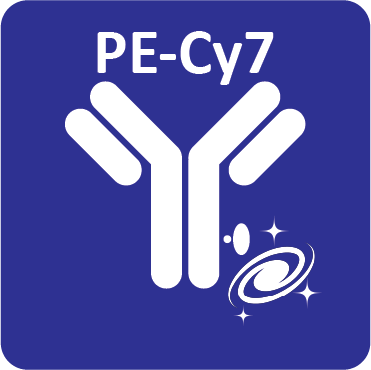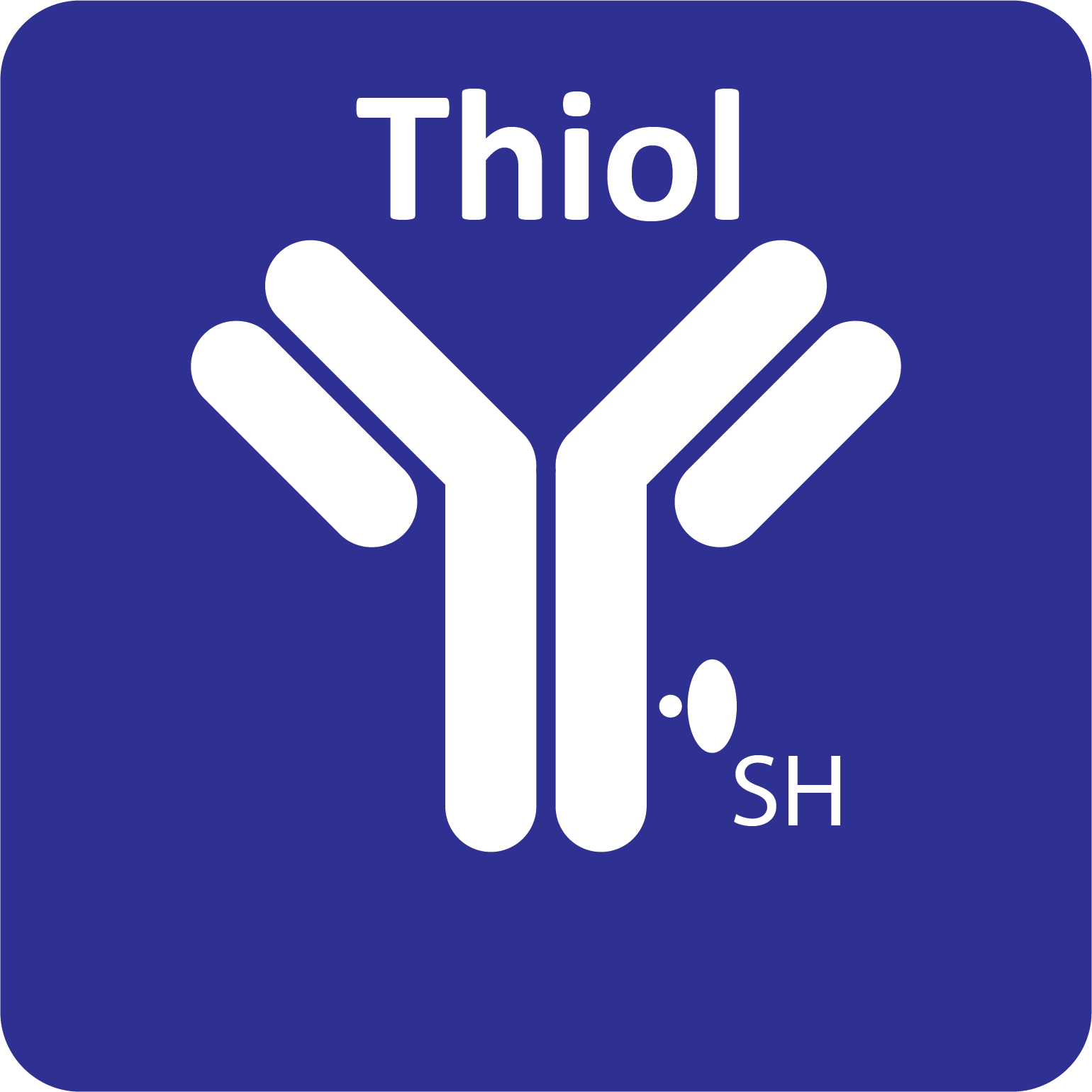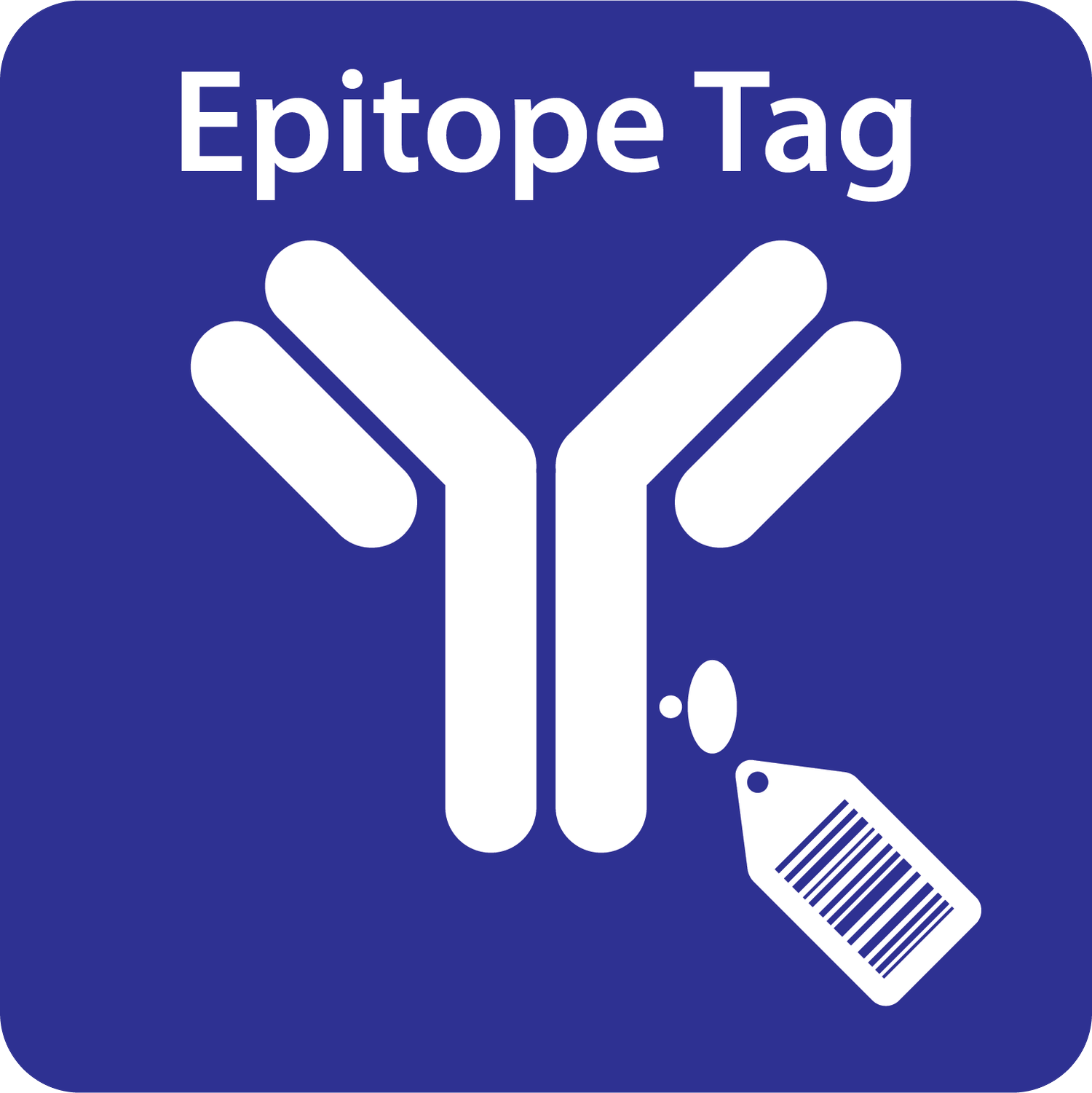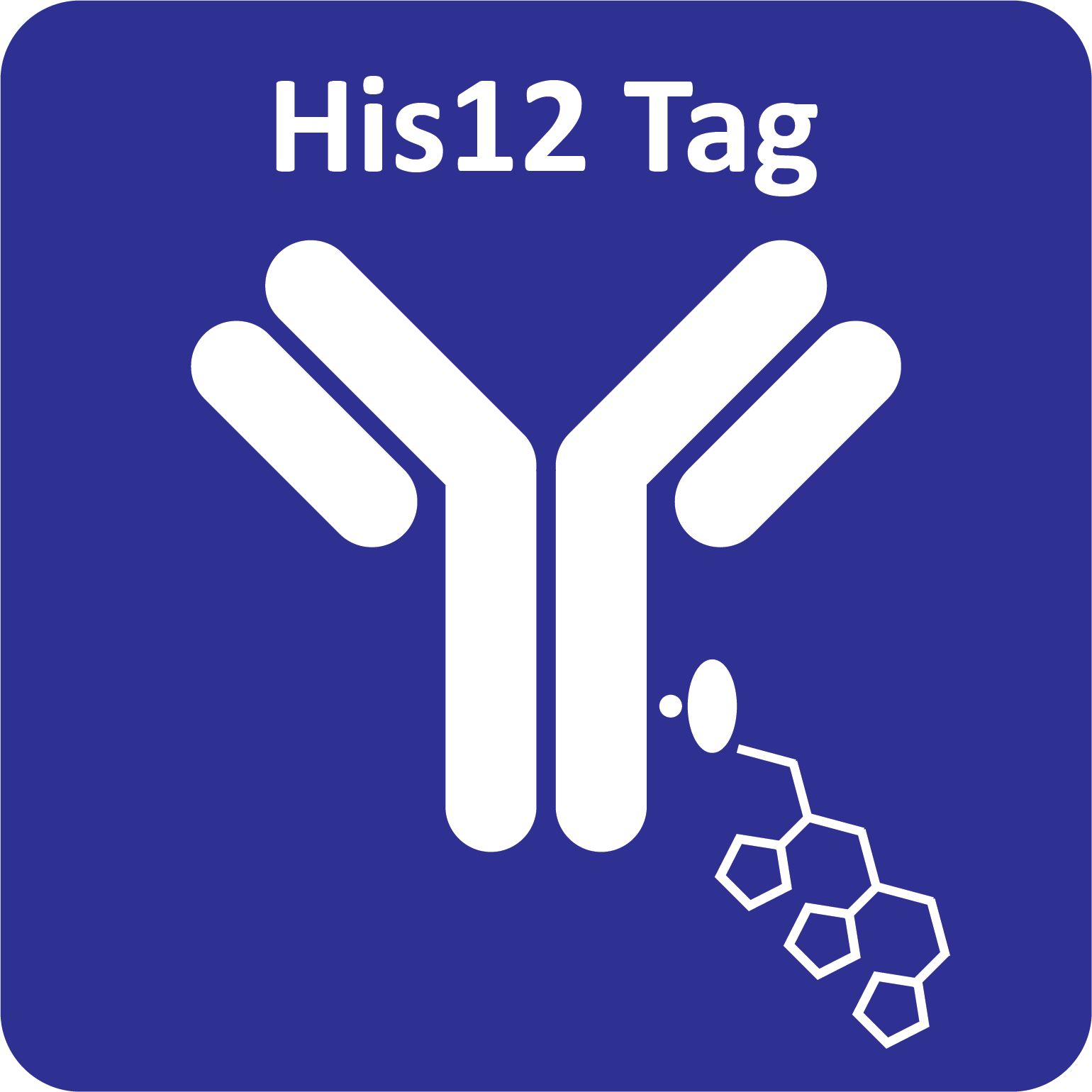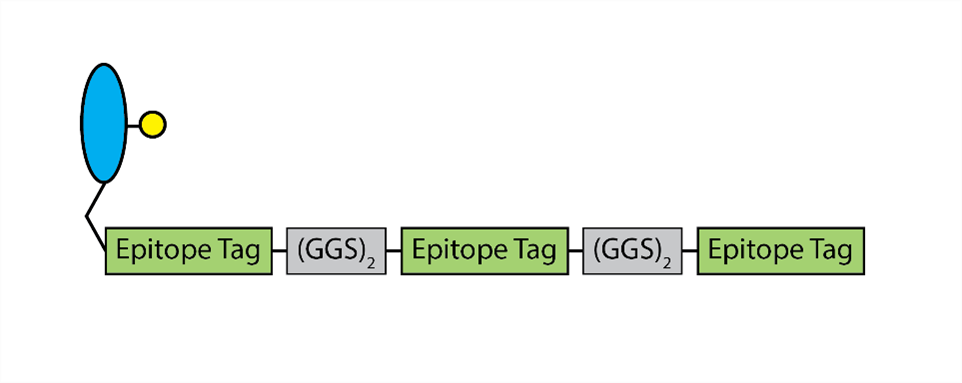Your cart is currently empty!
oYo-Link® Epitope Tag
Quick and easy labeling of antibodies with any of 10 epitope tags for simplified and enhanced multiplexing immunoassays.
Epitope Tags available: His12, DYKDDDDK, V5, S, VSVg, NWS, S1, AU1, AU5 and HSV1.
Requirements: Photo-crosslinking Device
Quick and easy labeling of antibodies with any of 10 epitope tags for simplified and enhanced multiplexing immunoassays.
Epitope Tags available: His12, DYKDDDDK, V5, S, VSVg, NWS, S1, AU1, AU5 and HSV1.
Requirements: Photo-crosslinking Device
oYo-Link® Epitope Tag enables quick and easy labeling of antibodies with any of 10 epitope tags for multiplexing immunoassays. The technology facilitates site-specific antibody conjugation on the Fc region with 3x tandem repeat epitope tags which leads to its unique detection, while avoiding cross-reactivity with other antibodies. Epitope Tags currently available include: His12, DYKDDDDK, V5, S, VSVg, NWS, S1, AU1, AU5 and HSV1.
To order please select the amount of antibody you would like to label below as well as the number of epitope tags you require for your multiplexing immunoassay. You will be able to select the specific tags required upon adding to cart.
(Please note that to label 25ug of antibody there is a minimum order requirement of 4 tags. oYo-Link Epitope Tag is not currently available for labeling mIgG1 Antibody.)
Requirements: Photo-Crosslinking Device
Quote or Bulk Orders? Request a quote here.
oYo-Link® Epitope Tag enables the simultaneous detection of up to 10 epitope-tagged antibodies, providing researchers with a new tool to simplify and significantly enhance multiplexing capacity.
Traditional multiplexing techniques require secondary antibodies that are specific for the primary antibodies, depending on the host and subclass. Due to the relatively small number of available antibody subclasses this limits overall multiplexing capacity.
oYo-Link Epitope Tag overcomes this limitation by enabling site specific labeling of the heavy chain of any compatible antibody with 3x tandem repeat epitope tags. This results in up to 6x copies per antibody which can be recognized and detected by corresponding anti-tag secondary antibodies separately, therefore allowing multiple antibodies, even from the same host species, to be uniquely identified and detected.
Webinar: Simple, fast, site-specific antibody labeling with oYo Link®
Watch our short introduction to AlphaThera’s oYo-Link® site-specific antibody conjugation technology and learn how to streamline your assays with these superior labeling products.
Antibody Conjugation User Manual
Read our antibody conjugation usual manual for instructions on how to easily conjugate your antibody with oYo-Link products.
Demo: oYo-Link® Antibody Conjugation
Find out how to site-specifically label your antibody with just two steps: mix and illuminate. 30 seconds hands-on time, 2 hours total.
oYo-Link® Product Brochure
Download our product brochure
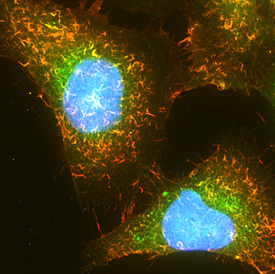
Figure 1: oYo-Link Epitope Tag Multiplexing Data
Fig. 1. oYo-Link Epitope Tag Multiplexing Data: HeLa cells were stimulated with 1uM Camptothecin and stained with Recombinant monoclonal rabbit anti-human/mouse/rat Ezrin antibody (R&D Systems, Cat. # AB72391), following conjugation with oYo-Link® HA Tag, and Polyclonal Rabbit x human phospho-Chk2 (T68) antibody (R&D systems, Cat. # AF1626), following conjugation with oYo-Link® DYKDDDDK Tag. the HA Tag and DYKDDDDK Tag were detected using anti-HA Alex Fluor® 594 (red) and anti-FLAG Alexa Fluor® 488 (green) secondary antibodies (counterstained with DAPI, blue)
Specifications:
| Product Name | oYo-Link® Epitope Tag |
| Catalog # | AT2002, AT9002, AT9003, AT9004, AT9005, AT9006, AT9007, AT9008, AT9009, AT9010 |
| Lot # | See Product Spec Sheet shipped with product. |
| MSDS | His12 Tag, DYKDDDDK Tag, V5 Tag, S Tag, VSVg Tag, NWS Tag, S1 Tag, AU1 Tag, AU5 Tag, HSV1 Tag |
| Antibody and Buffer Compatibility | See oYo-Link Antibody & Buffer Compatibility Table here. |
| Molecular Weight (kDa) | His12 Tag (8.7) DYKDDDDK Tag (11.9) V5 Tag (13.3) S Tag (14.2) VSVg Tag (12.9) NWS Tag (12.4) S1 Tag (12.2) AU1 Tag (11.4) AU5 Tag (11.2) HSV1 Tag (12.9) |
| Concentration | See individual spec sheets |
| Molar Concentration | 33 µM |
| Storage Buffer | 1 x PBS |
| Shipping Condition | This product is shipped as a dried clear or white pellet at ambient temperature. |
| Reconstitution | Before opening, briefly centrifuge each tube to ensure that the entire pellet is at the bottom. Add 100 μL sterile ddH2O and vortex tube briefly until fully dissolved. |
| Storage and Stability | The dried product can be stored at 4°C or -20°C upon receipt.Following reconstitution, the product can be stored at 4°C for short-term durations (< 1 week) and -20°C to -80°C for longer time-spans. |
| Conjugation Instructions | After reconstitution, each tube is capable of labeling 100 μg of compatible antibody. Please find and follow the Antibody Conjugation User Manual here**. |
| Other Notes | Disposal of product should be performed in compliance with all applicable federal, state, and local regulations. This product does not meet hazard classification criteria based on evaluations made by our company under the OSHA Hazard Communication Standard, 29 CFR 1910.1200. |

Multiplexing
Traditional multiplexing techniques require secondary antibodies that are specific for the primary antibodies, depending on the host and subclass. Due to the relatively small number of available antibody subclasses this limits overall multiplexing capacity. oYo-Link Epitope Tag overcomes this limitation by enabling site specific labeling of the heavy chain of any compatible antibody with 3 x tandem repeat epitope tags. This results in up to 6 x copies per antibody which can be recognized and detected by corresponding anti-tag secondary antibodies separately, therefore allowing multiple antibodies, even from the same host species, to be uniquely identified and detected.
In addition to multiplexing, Epitope Tags can be used for a variety of assays including western blotting, flow cytometry, immunoprecipitation and immunohistochemistry.
Epitope Tag Conjugation System Provides Versatility for Multiplex Assay Design
Amber D Miller, Danielle Fails, Kristin Doyle, Alyssa Hernandez, Mike Spencer. (2023). Epitope Tag Conjugation System Provides Versatility for Multiplex Assay Design. J Immunol, [online] 210 (1_Supplement): 249.24. doi: https://doi.org/10.4049/jimmunol.210.Supp.249.24
1. Q: Will oYo-Link work with my antibody?
A: Please check the antibody compatibility table. Note: oYo-Link Epitope Tag for labeling mIgG1 antibody is not currently available.
2. Q: Can oYo-Link be used to label antibodies in the presence of albumin and/or Tris?
A:Yes, since oYo-Link specifically bind to the heavy chain of IgG, it works in the presence of both albumin and Tris. oYo-Link is compatible with all common buffers. See the full buffer compatibility table here.
3. Q: If an oYo-Link product has accidentally been left at room temperature for a week, will it still work?
A: With the exception of oYo-Link MNase and oYo-Link DBCO, all oYo-Link products are shipped as white or clear pellets and are very stable. While we recommend cold storage, they will not exhibit any loss of activity if left at room temperature for a week. oYo-Link MNase and oYo-Link DBCO must be shipped and stored cold (-20°C) immediately upon arrival, otherwise there will be a loss in activity.
4. Q: Does AlphaThera offer conjugation service?
A:Yes. If you are interested in our conjugation service, please contact us at support@alphathera.local. For custom conjugation services, you will need to send us your antibody. The conjugation and purification fee depends on the size and specifications of each order. Purification is not required for most applications.
5. Q: How many oYo-Link labels will be conjugated to each antibody?
A:For most subclasses and species of antibody, oYo-Link will result in the conjugation of 2 labels per antibody (maximum), one label per heavy chain. For example, ~95% of human IgG and Rabbit IgG will have two labels per antibody. However, there are a few antibodies such as mouse IgG2b and goat IgG, where the conjugation is slightly less efficient. In this case, 60 to 80% of the antibody will be labeled and have a mixture of 0, 1 and 2 labels per antibody. See the antibody conjugation efficiency here
6. Q: How do I know if oYo-Link was successfully conjugated to my antibody?
A: Antibody conjugation can be checked on SDS-PAGE gel. An example is present in the supporting data on each product page.
7. Q: Does 365nm UV illumination damage the antibody and its binding affinity?
A: The conjugated and unconjugated antibody binding affinities have been tested via both ELISA and cell binding assays and don’t show any difference.
8. Q: Do I need to remove free oYo-Link after conjugating to antibody?
A: For most immunoassay applications, purification is not necessary. In our standard recommended protocol, the molar ratio of oYo-Link-to-antibody is 5:1. These conditions ensure that the antibody conjugation efficiency reaches its maximum; however there will be a slight excess remaining in your antibody mixture. This is usually removed during immunoassay washing steps. However, if your application requires high antibody-conjugate purity, please contact us for more information on this process and for a detailed protocol.
9. Q: For oYo-Link click-chemistry products, should I perform the click reaction before conjugation?
A: When working with oYo-Link Azide (Catalog #: AT3002) and oYo-Link DBCO (Catalog #: AT3003), it is required to perform the click chemistry coupling reactions with the molecule of interest first, prior to photo-crosslinking to an antibody. This is to avoid UV illumination damage to the click moiety and to avoid diluting oYo-Link prior to the reaction to maximize the reaction efficiency. For oYo-Link Tetrazine (Catalog #: AT3004) and oYo-Link Thiol (Catalog #: AT3001); it is recommended to perform the coupling reaction before photo-crosslinking. This is to avoid diluting oYo-Link prior to the coupling reaction to maximize the reaction efficiency.
10. Q: What is the lowest amount of antibody that can be labeled by oYo-Link reagents?
A: We recommend working with at least 1 µg of antibody; however, it is possible that even lower amounts of antibody can be labeled.
11. Q: Can antibodies that are highly dilute be labeled by oYo-Link reagents?
A: Yes, antibodies can be efficiently labeled even if diluted to concentrations as low as 50 µg/mL.
oYo-Link® Epitope Tag Advantages
- Enhanced Multiplexing Capability
Labeling of the antibody heavy chain with 3x tandem repeat epitope tags enables its unique detection while avoiding cross-reactivity with other antibodies.
- Site-Specific & Covalent Reaction
Covalent labeling of an antibody’s Fc region only, with no impact on antibody binding, ensures experimental reliability and reproducibility.
- Rapid Labeling.
<30 seconds “hands-on” time, 2 hours total. Two simple steps, Mix and Illuminate. No need to optimize reaction conditions.
- Compatible with nearly All Buffers
Even those containing BSA, Tris & Azide. - Label Small Amounts
Label as little as 1 µg of Antibody per reaction. - Label Diluted Antibody Solutions
Even those below a concentration of 50 µg/mL. - Save for Later
After resuspension, oYo-Link® products can be aliquoted and saved for future reactions.
Please Select Epitope Tag Options
4 EPITOPE TAGS: Please select only 4 Tags Below:
Each tag will be able to label the amount of Ab you selected on the previous page.


